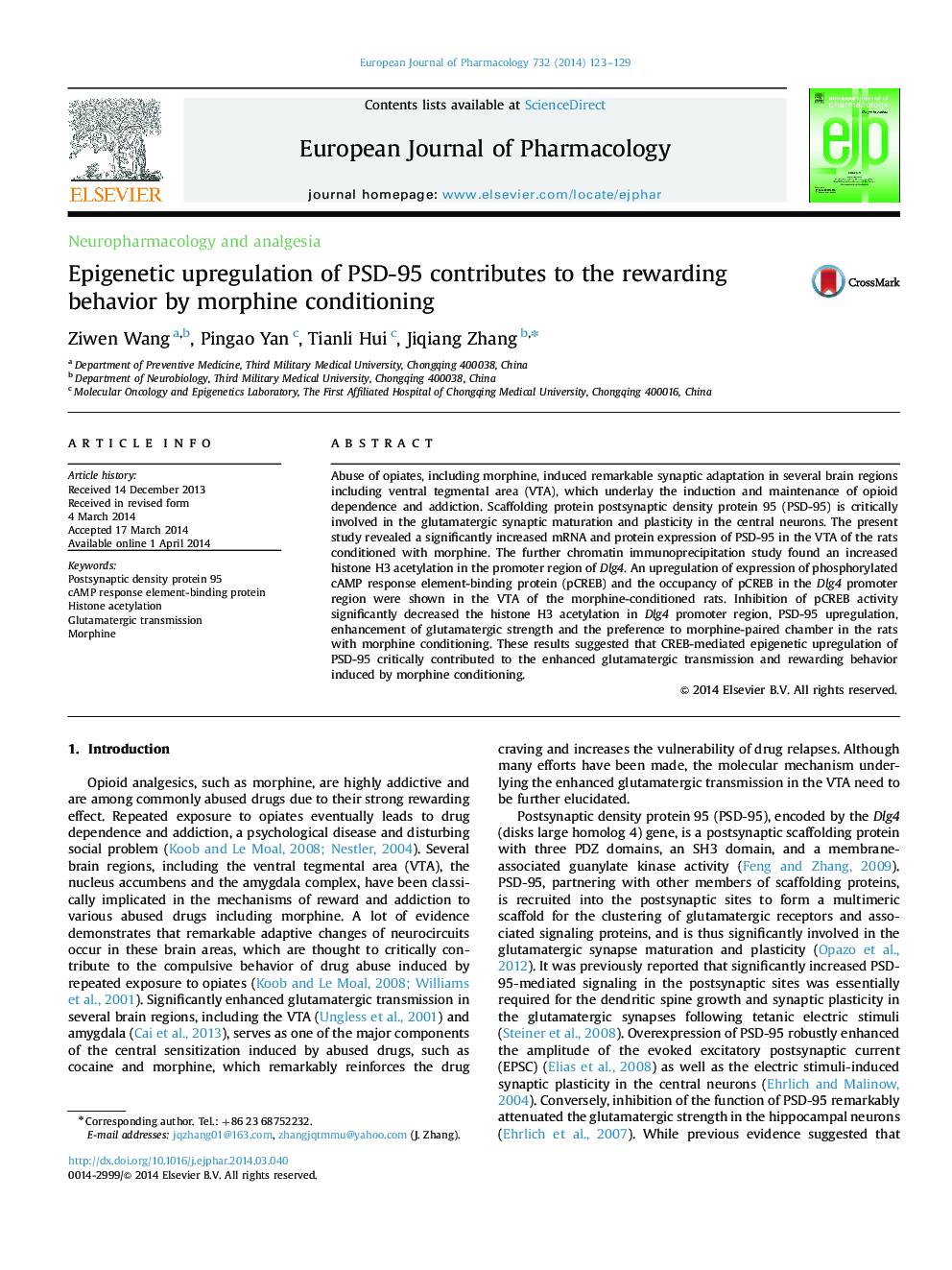| Article ID | Journal | Published Year | Pages | File Type |
|---|---|---|---|---|
| 5828015 | European Journal of Pharmacology | 2014 | 7 Pages |
Abuse of opiates, including morphine, induced remarkable synaptic adaptation in several brain regions including ventral tegmental area (VTA), which underlay the induction and maintenance of opioid dependence and addiction. Scaffolding protein postsynaptic density protein 95 (PSD-95) is critically involved in the glutamatergic synaptic maturation and plasticity in the central neurons. The present study revealed a significantly increased mRNA and protein expression of PSD-95 in the VTA of the rats conditioned with morphine. The further chromatin immunoprecipitation study found an increased histone H3 acetylation in the promoter region of Dlg4. An upregulation of expression of phosphorylated cAMP response element-binding protein (pCREB) and the occupancy of pCREB in the Dlg4 promoter region were shown in the VTA of the morphine-conditioned rats. Inhibition of pCREB activity significantly decreased the histone H3 acetylation in Dlg4 promoter region, PSD-95 upregulation, enhancement of glutamatergic strength and the preference to morphine-paired chamber in the rats with morphine conditioning. These results suggested that CREB-mediated epigenetic upregulation of PSD-95 critically contributed to the enhanced glutamatergic transmission and rewarding behavior induced by morphine conditioning.
